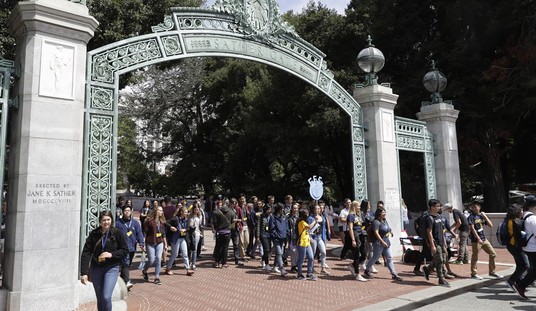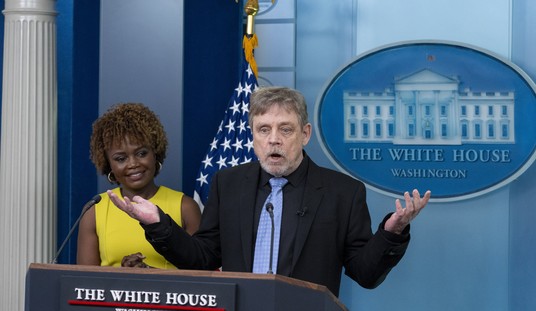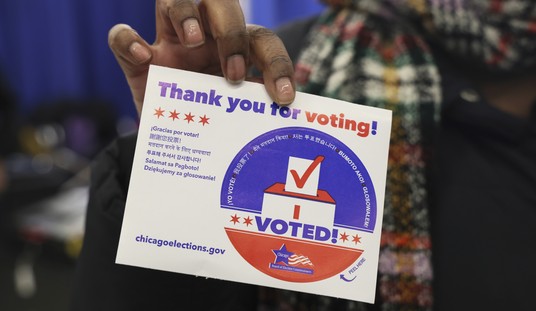Looks like we got a pleasant surprise from the Bureau of Labor Statistics after all. Despite a mediocre lead-in from ADP and expectations set at the 180K mark (which the Washington Post called “solid” for some reason), the July jobs report showed that the US economy added 255,000 jobs. That may brighten up the outlook on the economy at least a bit after two successive quarters of stagnation:
Total nonfarm payroll employment rose by 255,000 in July, and the unemployment rate was unchanged at 4.9 percent, the U.S. Bureau of Labor Statistics reported today. Job gains occurred in professional and business services, health care, and financial activities. Employment in mining continued to trend down.
The unemployment rate held at 4.9 percent in July, and the number of unemployed persons was essentially unchanged at 7.8 million. Both measures have shown little movement, on net, since August of last year.
That level of growth significantly outpaces the threshold needed to keep pace with population growth, between 135K-150K, depending on labor-force participation. Revisions made to the previous two months added 18,000 jobs overall to their totals, amounting to incremental changes. The average job growth in the past three months has been 190,000 — not exactly strong, but again just a little above population-growth pace, a net positive.
Those labor-force participation measures still haven’t picked up much, though, with both still near decades-long lows:
Both the labor force participation rate, at 62.8 percent, and the employment-population ratio, at 59.7 percent, changed little in July.
The civilian labor force expanded by 407,000 in July, which is why the jobless rate stayed steady even with the above-average expansion on jobs. However, the U-6 unemployment rate — considered a more reliable measure by some — ticked up a tenth of a point to 9.7%. Almost all of the new jobs came in the service sector (201K), with government adding 38,000 — third best of all listed sectors.
Also, part-time work increased in July, with 199,000 more people working part-time because of slack work or business conditions, while 81,000 fewer people did so because that was all they could find. On the other hand, both hours worked and wages crept upward, with average weekly earnings increasing $5.33.
This is a fairly solid report, with not too much negative on which to remark. It’s not explosive job growth, but relative to the recent GDP reports from the first two quarters, it’s surprisingly strong. Reuters agrees:
U.S. employment increased more than expected in July and wages picked up, which should bolster expectations of an acceleration in economic growth and raise the probability of an interest rate hike from the Federal Reserve this year.
Nonfarm payrolls increased by 255,000 jobs last month as hiring rose broadly after an upwardly revised 292,000 surge in June, the Labor Department said on Friday.
The unemployment rate was unchanged at 4.9 percent as more people entered the labor market. Highlighting labor market strength, average hourly wages increased a healthy eight cents. May payrolls were revised up to 24,000 from the previously reported 11,000.
The AP’s Christopher Rugaber, who foresaw a strong report on Wednesday, calls this “a sign of confidence” in the economy from American business:
July’s robust job gain may be enough to reassure investors — and perhaps Federal Reserve policymakers — that the economy will keep growing at a slow but steady pace. The economy slumped in the first half of this year, with an annualized growth rate of just 1 percent. Growth has been driven by consumers, who ramped up spending in the April-June quarter at the second-fastest pace since the recession.
That figure underscored the importance of strong hiring, which puts more paychecks into more pockets and supports greater spending. Many analysts expect the economy to rebound in the second half of the year, with one of the most optimistic estimates coming from the Federal Reserve Bank of Atlanta: It predicts that annualized growth will reach 3.7 percent in the current July-September quarter.
But it’s not all peaches and cream, Rugaber notes:
But manufacturing continues to struggle and is weighing on hiring. Factories received fewer orders in June for a third straight month. Weak growth overseas and a stronger dollar have cut into many companies’ overseas businesses. And auto sales have leveled off, according to data released this week.
The slowdown in manufacturing has cost jobs: Factory employment has fallen about 30,000 in the past year, depriving the economy of key middle-income positions.
Those are the workers to whom Donald Trump appeals, so they’re not likely to shed their negative perceptions of the American economy, nor will Bernie Sanders’ supporters for different reasons. It’s a decent jobs report, surprisingly good considering the recent growth numbers, but it doesn’t look like enough to change the political landscape.
Update: The headline initially had a typo, stating that the jobless rate was 4.0%. I’ve fixed it to 4.9%.








Join the conversation as a VIP Member